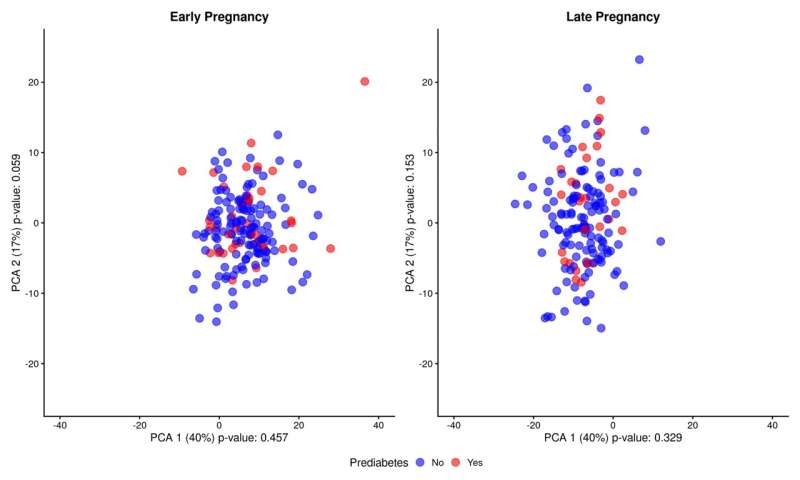This article has been reviewed according to Science X's editorial process and policies. Editors have highlighted the following attributes while ensuring the content's credibility:
fact-checked
trusted source
proofread
Early pregnancy blood samples can shed light on risk of developing type 2 diabetes

Researchers from the University of Turku in Finland discovered that women who developed prediabetes after pregnancy had aberrations already in their early pregnancy blood serum metabolomic profile. More specifically, they had higher concentrations of small HDL particles in early pregnancy. The research results were published in the Metabolomics journal.
Mothers' metabolism changes during pregnancy to secure the growth of the fetus, among other things. Aberrations in metabolism during pregnancy have been previously discovered in women who develop gestational diabetes. As gestational diabetes is a well-known risk factor for type 2 diabetes, researchers wanted to study whether it would be possible to identify the women who have an increased risk of type 2 diabetes already based on their metabolism during pregnancy.
Mothers' risk of type 2 diabetes was examined at the mother-child study conducted at the University of Turku and Turku University Hospital in Finland. The metabolic profiles of the mothers' blood samples, in other words their serum metabolic profiles, in early and late pregnancy were measured with a method that recognizes more than 200 metabolites and their ratios. In addition, the mothers' fasting blood glucose and insulin resistance were evaluated with traditional laboratory tests at postpartum. The serum metabolic profiles during pregnancy were compared for women who developed prediabetes and women whose fasting glucose remained at a regular level at two years postpartum.
"We discovered that the metabolic profile in early pregnancy together with clinical variables, such as age and pre-pregnancy body mass index, predicted prediabetes at postpartum. Higher concentrations of small HDL particles in blood circulation during early pregnancy were associated with higher fasting glucose and insulin resistance at two years postpartum," says Doctoral Researcher Ella Muhli from the Early Nutrition and Health research group of the University of Turku.
"Based on our findings, women at increased risk for type 2 diabetes could possibly be identified in early pregnancy based on their serum metabolic profiles. However, similar associations were not detected in late pregnancy," adds Muhli.
The higher concentration of the small HDL particles in circulation has been previously associated with the risk of cardiovascular diseases, in addition to the risk for type 2 diabetes.
More information: Ella Muhli et al, Aberrations in the early pregnancy serum metabolic profile in women with prediabetes at two years postpartum, Metabolomics (2023). DOI: 10.1007/s11306-023-01994-z




















